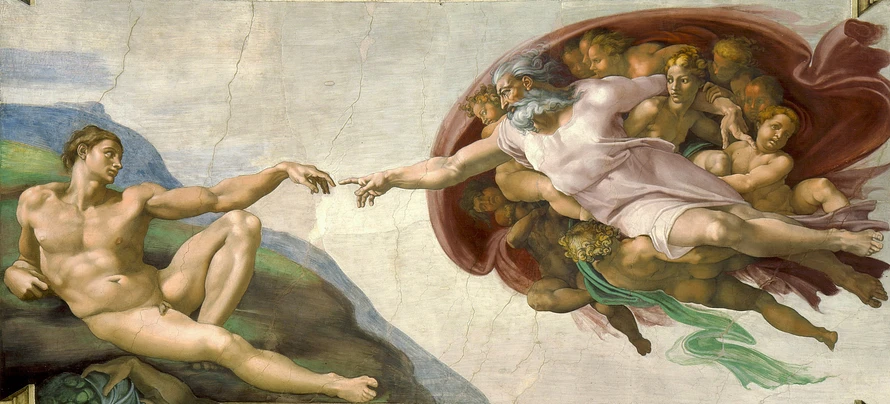Michelangelo and The Creation of Adam: The Story Behind a Renaissance Masterpiece
The Creation of Adam by Michelangelo is one of the most iconic images in the history of art. Painted on the ceiling of the Sistine Chapel in Vatican City, this masterpiece is a hallmark of the Italian Renaissance and continues to inspire awe more than 500 years after its creation. But what’s the story behind this famous painting — and what makes it so unforgettable?
Who Was Michelangelo?
Michelangelo Buonarroti (1475–1564) was a master of many talents — a sculptor, painter, architect, and poet. He is widely regarded as one of the greatest artists of all time. While he considered himself primarily a sculptor (his works include David and Pietà), his ceiling frescoes in the Sistine Chapel transformed painting forever.
Commissioned by Pope Julius II, Michelangelo began work on the Sistine Chapel ceiling in 1508. Though reluctant at first, the project would become one of his most defining achievements. Among the nine central panels from the Book of Genesis, The Creation of Adam stands out as the most recognized and celebrated.
What Is The Creation of Adam?
The Creation of Adam is a fresco painting completed around 1511, located in the center of the Sistine Chapel ceiling. It depicts the biblical moment when God gives life to Adam, the first man. In the image, God and Adam face each other, their hands nearly touching — a moment bursting with energy, meaning, and symbolism.
Key Features of the Artwork:
-
Location: Sistine Chapel, Vatican City
-
Medium: Fresco
-
Artist: Michelangelo
-
Date: c. 1511
-
Subject: The biblical creation of Adam by God (Book of Genesis)
Symbolism and Interpretation
The nearly-touching hands of God and Adam have become one of the most famous images in art history. That small gap between the fingers is charged with anticipation — a visual metaphor for the spark of life and the divine-human connection.
Some art historians have also pointed out hidden anatomical symbolism. For instance:
-
The shape surrounding God resembles a human brain, possibly symbolizing the gift of intellect.
-
Others believe it mirrors a uterus, referencing themes of birth and creation.
Michelangelo's deep understanding of human anatomy, developed through dissections, is evident in the lifelike representation of muscles and posture in Adam’s body.
Why Is The Creation of Adam So Famous?
There are several reasons why The Creation of Adam remains one of the most recognized paintings in the world:
-
Universal Themes: Life, creation, connection, and divine power.
-
Renaissance Innovation: Michelangelo's dynamic composition broke away from traditional static forms.
-
Cultural Impact: The image has been reproduced, referenced, and parodied in countless ways — from advertisements to movies to memes.
-
Artistic Mastery: The detail, anatomy, emotion, and layout all contribute to its enduring power.
Visit the Sistine Chapel and See It Yourself
If you’re traveling to Rome, visiting the Sistine Chapel should be at the top of your list. Seeing The Creation of Adam in person is an unforgettable experience. It’s not just a painting — it’s a piece of human history.
Final Thoughts
Michelangelo’s The Creation of Adam is more than just an artwork — it’s a symbol of the human spirit, the reach toward something greater, and the brilliance of the Renaissance. Whether you’re an art lover, student, or traveler, understanding this masterpiece adds depth to how we see both history and ourselves.
